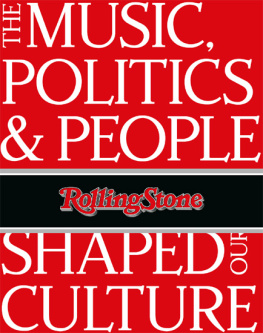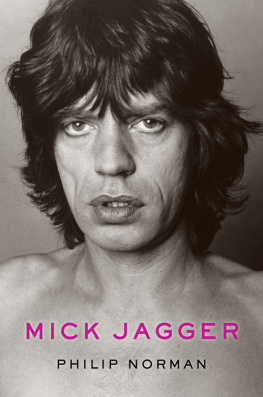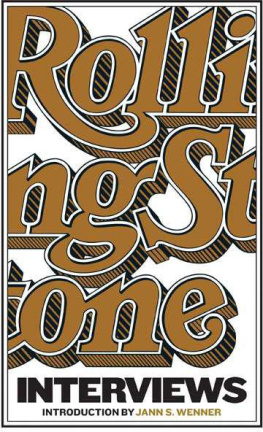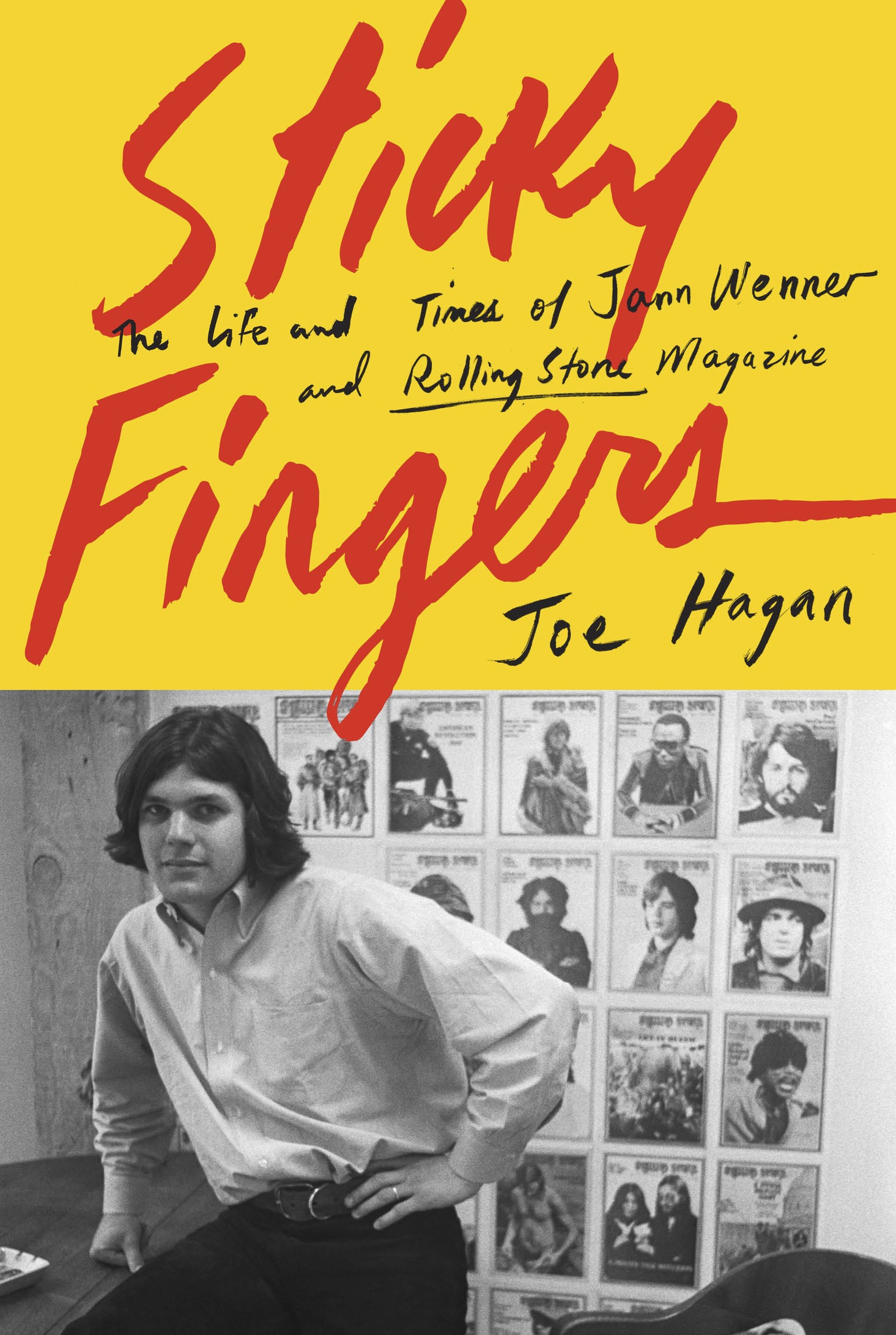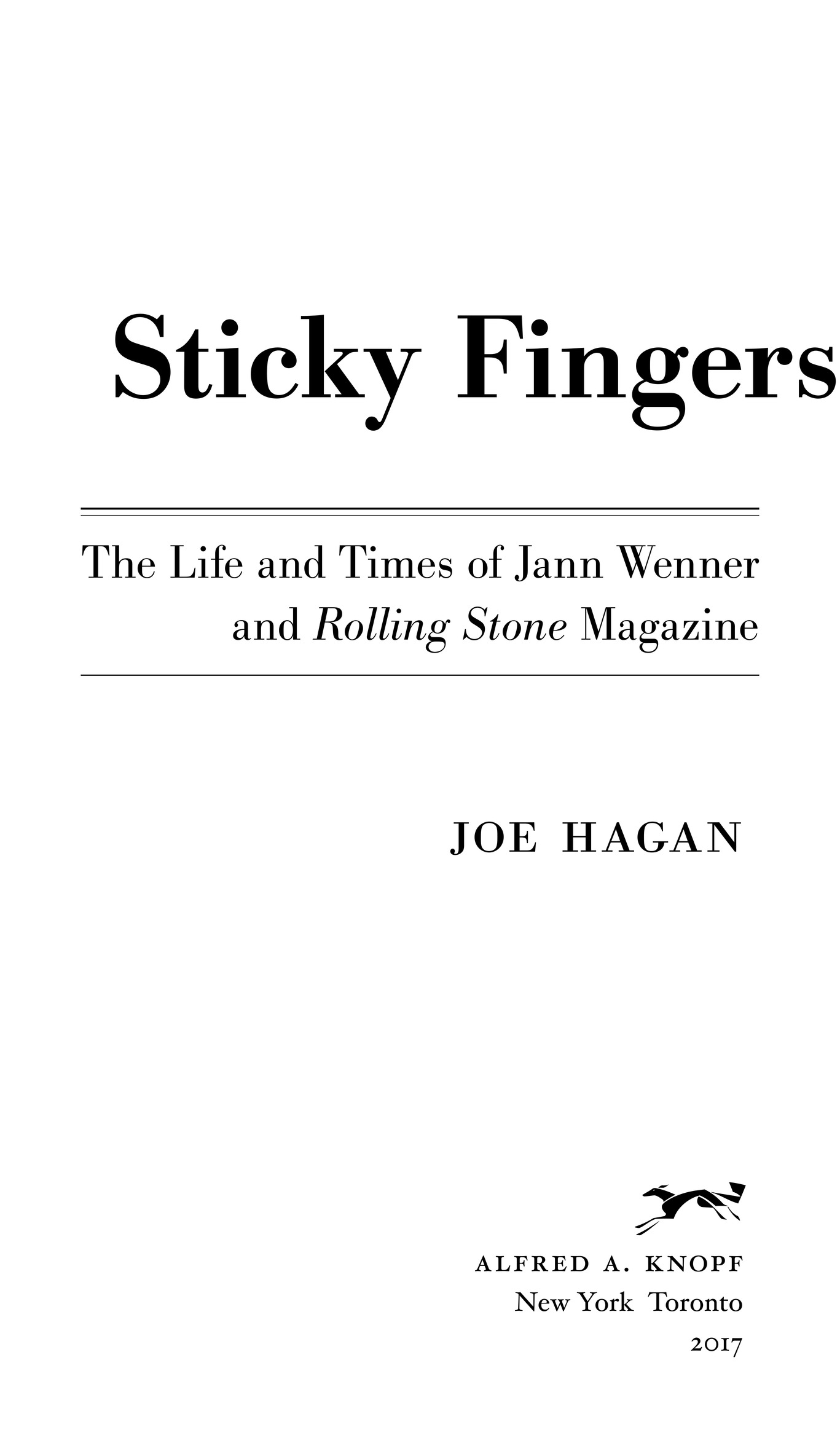THIS IS A BORZOI BOOK
PUBLISHED BY ALFRED A. KNOPF
Copyright 2017 by Joe Hagan
All rights reserved. Published in the United States by Alfred A. Knopf, a division of Penguin Random House LLC, New York, and in Canada by Alfred A. Knopf Canada, a division of Penguin Random House Canada Limited, Toronto.
www.aaknopf.com
Knopf, Borzoi Books, and the colophon are registered trademarks of Penguin Random House LLC.
Library of Congress Cataloging-in-Publication Data
Names: Hagan, Joe, 1971 author.
Title: Sticky fingers : the life and times of Jann Wenner and Rolling stone magazine / Joe Hagan.
Description: First edition. | New York : Alfred A. Knopf, 2017.
Identifiers: LCCN 2017018102 (print) | LCCN 2017028387 (ebook) | ISBN 9781101874370 (hardcover) | ISBN 9781101874387 (ebook)
Subjects: LCSH : Wenner, Jann. | EditorsUnited StatesBiography. | Publishers and publishingUnited StatesBiography. | Rolling stone (San Francisco, Calif.)
Classification: LCC Z 473. W 46 (ebook) | LCC Z 473. W 46 H 34 2017 (print) | DDC 070.5/1092 [ B ]dc23
LC record available at https://lccn.loc.gov/2017018102
Ebook ISBN 9781101874387
Library and Archives Canada Cataloguing in Publication
Hagan, Joe, 1971 author.
Sticky fingers : the life and times of Jann Wenner and Rolling stone magazine / Joe Hagan.
Issued in print and electronic formats.
ISBN 978-0-345-81505-7
eBook ISBN 978-0-345-81507-1
1. Wenner, Jann. 2. Publishers and publishingUnited StatesBiography. 3. EditorsUnited StatesBiography. 4. Rolling stone (San Francisco, Calif.). I. Title.
Z 473. W 46 H 34 2017 070.5'1092 C 2017-903820-6
Cover photograph of Jann Wenner, August 2, 1970. Bettmann/Getty Images
Cover design by Oliver Munday
v4.1
ep
Contents
This book is dedicated to Samantha Hunt and our merry band, Rosa, Marie, and Juliet
Cant you hear me knocking?
The Rolling Stones
Prologue: Get Back
J ohn Lennon was in a movie theater, crying.
The image of Paul, singing from the rooftop in the final ten minutes, had set him off. Jann Wenner shifted in his seat. In the darkness of a tiny movie house in San Francisco, the Beatle, Wenners hero, whose iconic spectacles and nose adorned the first issue of his rock-and-roll newspaper, Rolling Stone, had tears running down his cheeks as light flickered off his glasses. And next to him was Yoko Ono, the bte noire of Beatledom, raven hair shrouding her porcelain face, also weeping.
It was a Saturday afternoon in the spring of 1970, and John and Yoko and Jann and his wife, Jane Wenner, were watching the final scenes of Let It Be, the documentary about the Beatles acrimonious last recording session. John and Yoko were deep into primal scream therapy, their emotions raw and close to the surface, and the image of a bearded Paul McCartney singing from the rooftop of Apple Records, against a cold London wind, was too much to bear.
Get back to where you once belonged
For Wenner, the twenty-four-year-old boy wonder of the new rock press, who worshipped the Beatles as passionately as any kid in America, this was a dream, sitting here in the dark, wiping away his own tears at the twilight of the greatest band of all time, elbow to elbow with the most famous person in the world, for Gods sake.
And its just the four of us in the center of an empty theater, marveled Wenner, all kind of huddled together, and John is crying his eyes out.
Lennon and Ono had driven up from Los Angeles to meet the San Francisco fanboy who had bottled the counterculture and now commanded 200,000 readers. Wenner received the couple like visiting royalty to his spanking-new offices on Third Street, the clatter of typewriters going silent as they walked through the cubbies of writers and editors, bushy-haired men in ties and Levis who paused from parsing Captain Beefheart and Pete Townshend to gawk. Wenners unabashed idol worship had so often embarrassed themstarfucker, they grumbled behind his backbut now here he was with an actual Beatle. And Yoko! Who could deny this? The hirsute supercouple were smaller than anybody imagined, but John Lennon still towered over Jann Wenner, who at five six so often found himself gazing up at his heroes like a boy vampire.
I mean, its everything you ever worshipped or cherished from afar, said Wenner. You try and be as natural as possible because I dont think people want the worship and the gee whiz. And youre just mainly curious and fascinated and hanging on to every word but also trying to be sociable, entertaining, and good company and not be groupie-ish and slavish.
Wenner guided them to his back office, past the plastic marijuana plant and the picture of Mickey Mouse shooting heroin, laboring to project the air of a self-possessed press baron inured to celebrity. He looked every bit the modish publisher, plump in his button-down oxford and blue jeans, shoulder-length hair fashionably styled, a True cigarette smoking in his fingers. Wenner personally moved the couple from the Hilton to the more upscale Huntington Hotel, in Nob Hill, and then took them sightseeing in Wenners convertible Porsche, hoping to impress. People like John Lennon, Wenner would say, want to feel they are dealing with somebody important.
It worked, but maybe not for the reason he imagined: Yoko Onos memory of the weekend would be Jane Wenner, Janns wife, a chicly dressed waif with sculpted cheekbones and an insolent gaze. I thought, how lucky is this man! said Ono. What did he do to get her?
The women were crammed in the back of the Porsche, while Wenner and Lennon talked up front and Wenner drove through the hills where Ono once lived as a child in the 1930s with her Japanese immigrant parents, scions of imperial wealth. While he casually offered advice on promoting Lennons promised primal album and inquired about their lifestyle in Los Angeles (Wenner recalled John and Yoko living in the mansion featured in The Beverly Hillbillies), Wenner found the proximity to John Fucking Lennon as intoxicating as a drug. Here was the selfsame Beatle whod cracked open Wenners world in 1964 when, on summer break from UC Berkeley, he first saw A Hard Days Night in a Pasadena movie theater. The sly smile and scabrous wit had seemed to wink across the screen directly at him. Wenner even named his aborted novel for a Beatles lyricNow These Days Are Gone, a nostalgic, Holden CaulfieldatBerkeley roman clef. From the very first issue of Rolling Stone, Lennon was the lodestar: In his first editorial on November 9, 1967, Wenner declared that Rolling Stone was not just about music, but also about the things and attitudes that the music embraces, proving his point with a cover image of Lennon from his role as Musketeer Gripweed in Richard Lesters absurdist antiwar comedy, How I Won the War. Since 1965, wrote Wenner for an issue naming Lennon Rolling Stones Man of the Year, a few months before John and Yokos visit, the Beatles have been the single dominant force in the new social thought and style for which the Sixties will forever be remembered, just as Charlie Chaplin was the public figure of the Twenties.
And so every moment with John Lennon felt like a story Wenner would tell for the rest of his life, a page of history hed stepped intoindeed, that he would publish. Every detail of the weekend seemed charged with significance: the white sneakers dangling from Lennons flight bag, the look of shock on the bellboys face at the snobbish hotel when Lennon casually tossed him the bag. Over lunch, Wenner watched with awe and a certain satisfaction as Lennon savaged fans who approached him. People would come up and ask him for an autograph, and he would just snarl, Go away! Wenner said.




